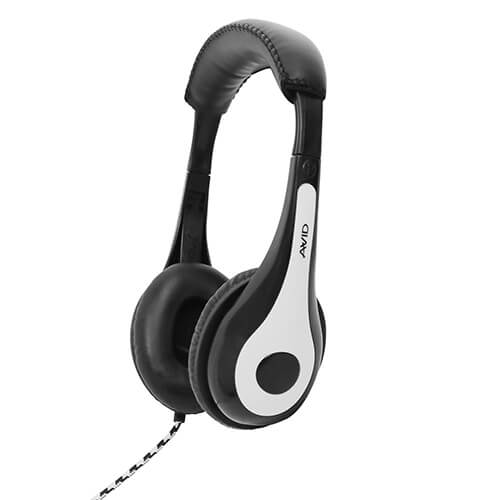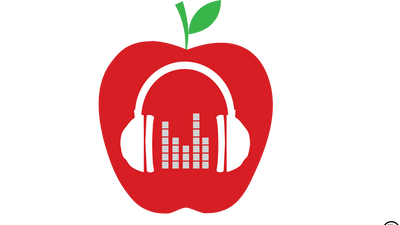Headphones can really help special needs students learn better by making the classroom quieter and helping them focus. Let's look at how to pick the right headphones for these students.
Key Takeaways
| Aspect | Consideration |
|---|---|
| Types | Over-ear, On-ear, In-ear |
| Key Features | Noise-cancellation, Comfort, Durability |
| Safety | Volume-limiting, Hypoallergenic materials |
| Special Needs | Customized features for specific conditions |
| Age Groups | Different models for elementary, middle, and high school |
Understanding the Importance of Headphones for Special Needs Students
For students with special needs, good headphones can make learning much easier. They can help block out distracting noises, improve concentration, and provide sound that's just right for each student's needs. Classroom headphone packs are a great way to make sure every student has this helpful tool.
Benefits of Headphones for Special Needs Students
- Reduce distractions in the classroom
- Improve focus on learning tasks
- Provide personalized audio experience
- Create a calmer learning environment
- Accommodate individual sensory needs
- Offer noise-cancellation features
- Include volume control options for safety
- Available in various types (over-ear, on-ear, in-ear)
- Enhance sound quality for better comprehension
- Support assistive technologies for diverse learning needs
Types of Headphones for Special Needs Students
There are three main types of headphones that can work well for special needs students:
1. Over-ear Headphones
Over-ear headphones cover your whole ear. They're great for blocking out noise and giving really good sound. They're especially helpful for students with autism or those who get distracted easily by background noise.
The Califone NeoTech Plus Headphone costs $31.99. It has a soft headband, a microphone that blocks out noise, and a strong 6-foot cord. You can adjust it to fit different head sizes, which is great for students of all ages.
2. On-ear Headphones
On-ear headphones sit on top of your ears. They're lighter than over-ear headphones and easier to carry around. These are good for students who need to move a lot or don't like the feeling of something covering their whole ear.

The Child-sized Califone 3068-style Switchable Stereo/Mono School Headphones are made for kids from preschool to 4th grade. They cost $16.80, are comfy to wear, and you can replace the ear cups if they wear out. They can switch between stereo and mono sound, which is helpful for students who have trouble hearing or use special listening devices.
3. In-ear Headphones/Earbuds
In-ear headphones or earbuds go inside your ear. They're very small and easy to carry. Older students or those who don't want big headphones might like these better. They can be easier to put in and take out for students who have trouble with small movements.

The School Earbud AE-215 only costs $1.25. It has good sound, fits comfortably, and has a 5-foot cord. These are easy to store and carry, which is great for students who move between different classrooms during the day.
Key Features to Consider
When picking headphones for special needs students, look for these important features:
Noise-cancellation technology
Helps students focus by reducing background noise
Comfort and fit
Crucial for extended wear in classroom settings
Durability and build quality
Ensures headphones can withstand daily classroom use
Noise-cancellation technology helps students focus by making background noise quieter. This is really helpful for students who have trouble processing sounds or get distracted easily. Comfort is important because students might wear the headphones for a long time. Look for headphones with soft materials and adjustable sizes. Durability means the headphones can handle being used every day in the classroom, which is important because they might get dropped or pulled sometimes.
Also, think about things like how good the microphone is for interactive learning and if it can connect to computers easily with USB. USB connections can be really useful for students who use special technology or software that needs digital sound input.
Safety Considerations
Safety is really important when choosing headphones for special needs students. Look for:
- Volume limits to protect hearing
- Materials that won't cause allergies for sensitive skin
- Cords that don't tangle to prevent accidents
- Headbands that can be adjusted for a good fit
- Lightweight designs so they don't hurt the neck
It's important to know that sounds shouldn't be louder than 85 decibels for more than 40 hours a week to keep hearing safe. Many students listen to music much louder than this, which can hurt their ears over time. We need to teach students, parents, and teachers about listening safely and why it's bad to listen to loud sounds for too long.
Addressing Specific Needs
Different special needs require different headphone features:
- For students with autism: Look for headphones that block out a lot of noise to help with sensory overload. Some headphones let you change how they sound, which can be helpful.
- For students who have trouble hearing: Some headphones let you make certain sounds louder. There are even headphones that send sound through your bones, which can help some types of hearing problems.
- For students who have trouble processing sensory information: Choose headphones that are very comfortable and don't squeeze too tight. Soft materials that let air through are good.
- For students with ADHD: Pick headphones that block out a lot of noise to help them focus. Some headphones have calming sounds or white noise options that can help.
Check out our school headsets for iPad collection for options that work well with popular learning technology. These headsets are made to work with many educational apps and programs often used in special education classes.
Classroom Integration and Best Practices
To use headphones well in the classroom:
- Make quiet areas where students can use headphones
- Teach students how to use and take care of headphones, including how to change the volume and when to take breaks
- Mix using headphones with other activities so students still talk to each other
- Clean the headphones regularly to keep them hygienic and working well
- Check often to see if the headphones are helping each student and make changes if needed

The AE-35 Classroom Headphone is a great choice for classrooms. It's strong, comfortable, and fits many different students. The sound is clear, which helps students learn better.
Recommended Headphone Models for Different Age Groups
Choosing the right headphones also depends on how old the student is:
Elementary School Students

For younger kids, look for strong headphones that can be adjusted and have limits on how loud they can be. Our classroom headphone packs are great for a whole class. These often come in fun colors that kids like, which makes them want to use and take care of their headphones.
Middle School Students

Middle schoolers might like headphones that look more grown-up. Check out our middle school headsets for options that look cool but still work well. These often have more features like microphones for interactive learning.
High School Students

High school students usually prefer sleeker designs with more advanced features. Our high school headsets collection has lots of options for older students. Look for headphones with better sound quality, wireless options, and longer battery life to help with different types of learning and studying on their own.
Conclusion: Making the Right Choice
Picking the right headphones for special needs students is really important for helping them learn better. Think about what each student needs, what the classroom is like, and which features will help them learn best. When you can, it's good to let students help choose their headphones to make sure they like them.
Remember to check how well the headphones are working for each student and make changes if needed. This might mean trying different headphones, changing how long they use them, or finding new ways to learn with sound. With the right headphones, special needs students can focus better, get more involved in their learning, and do better in school.
Take a look at our big collection of educational headphones to find the perfect ones for your students. Together, we can make learning easier and better for all students by using sound technology to help different ways of learning.




